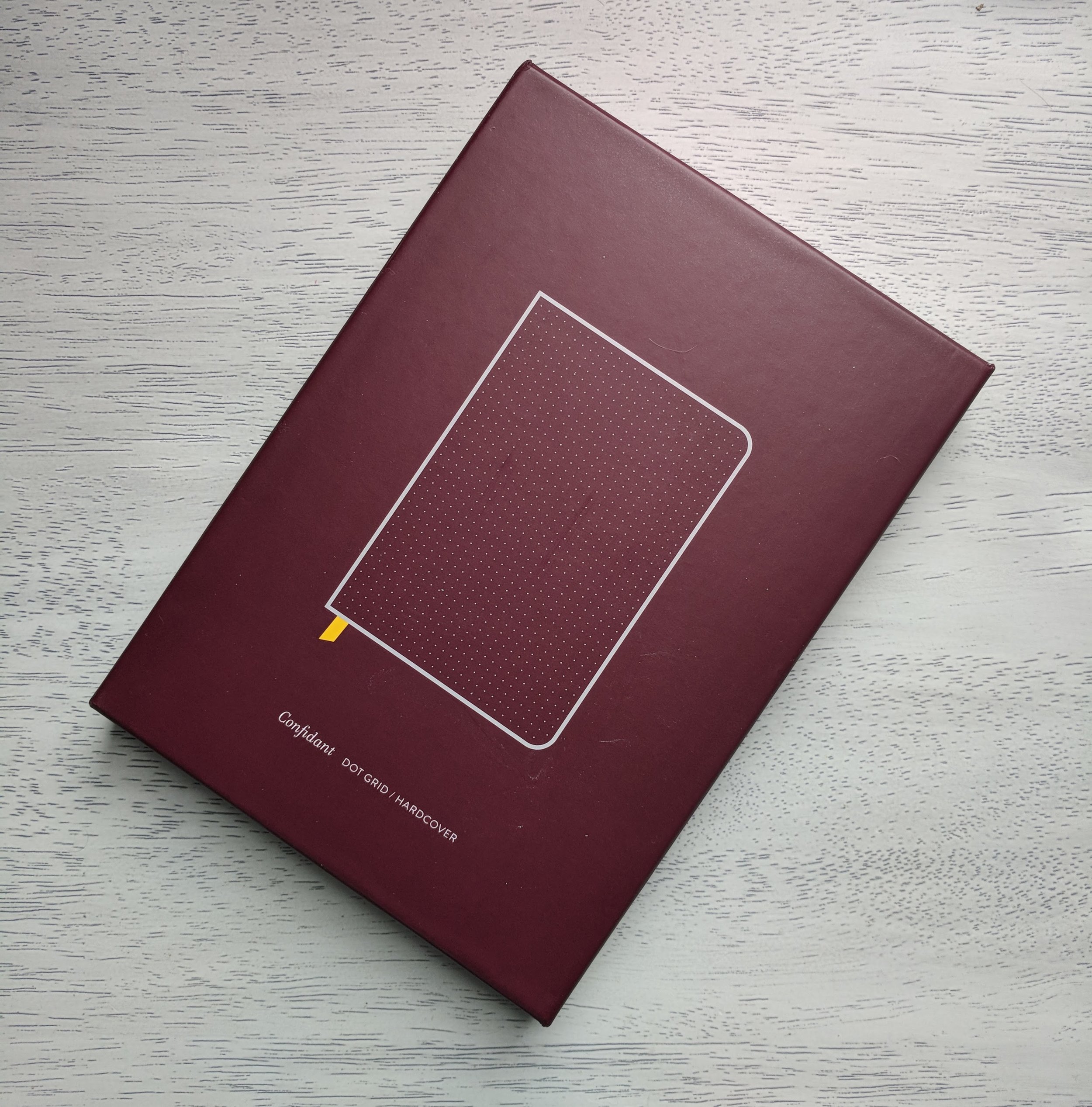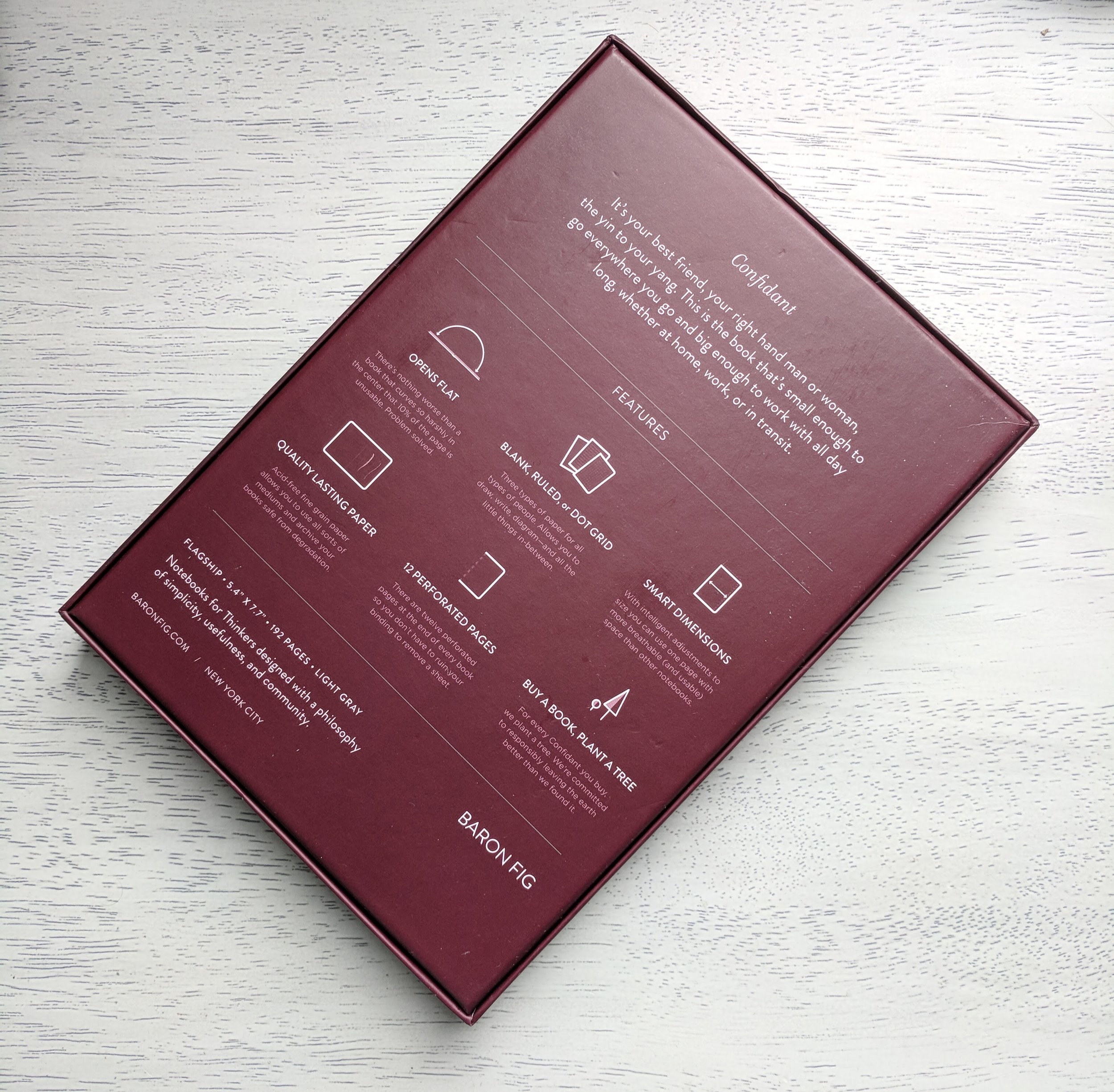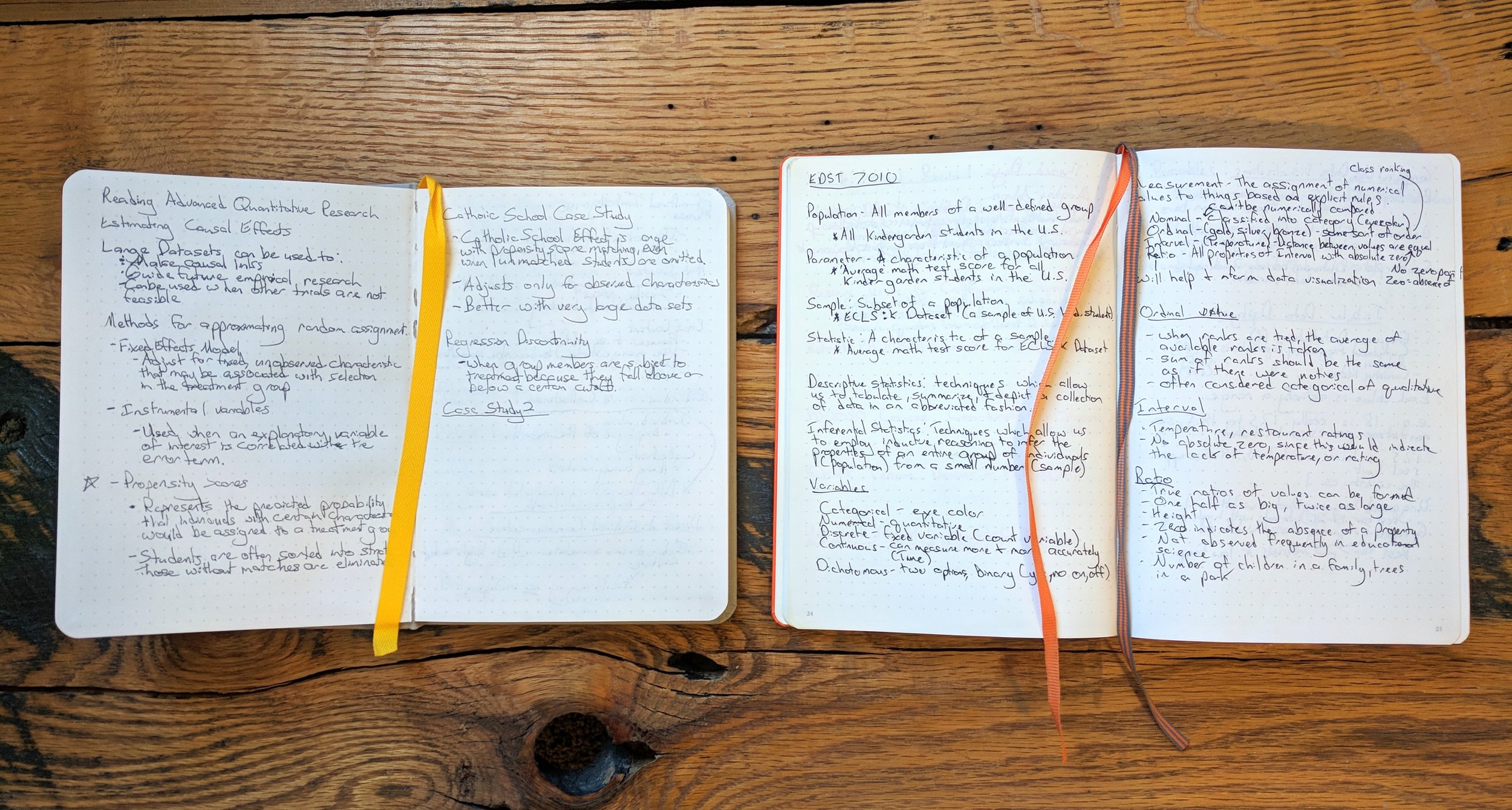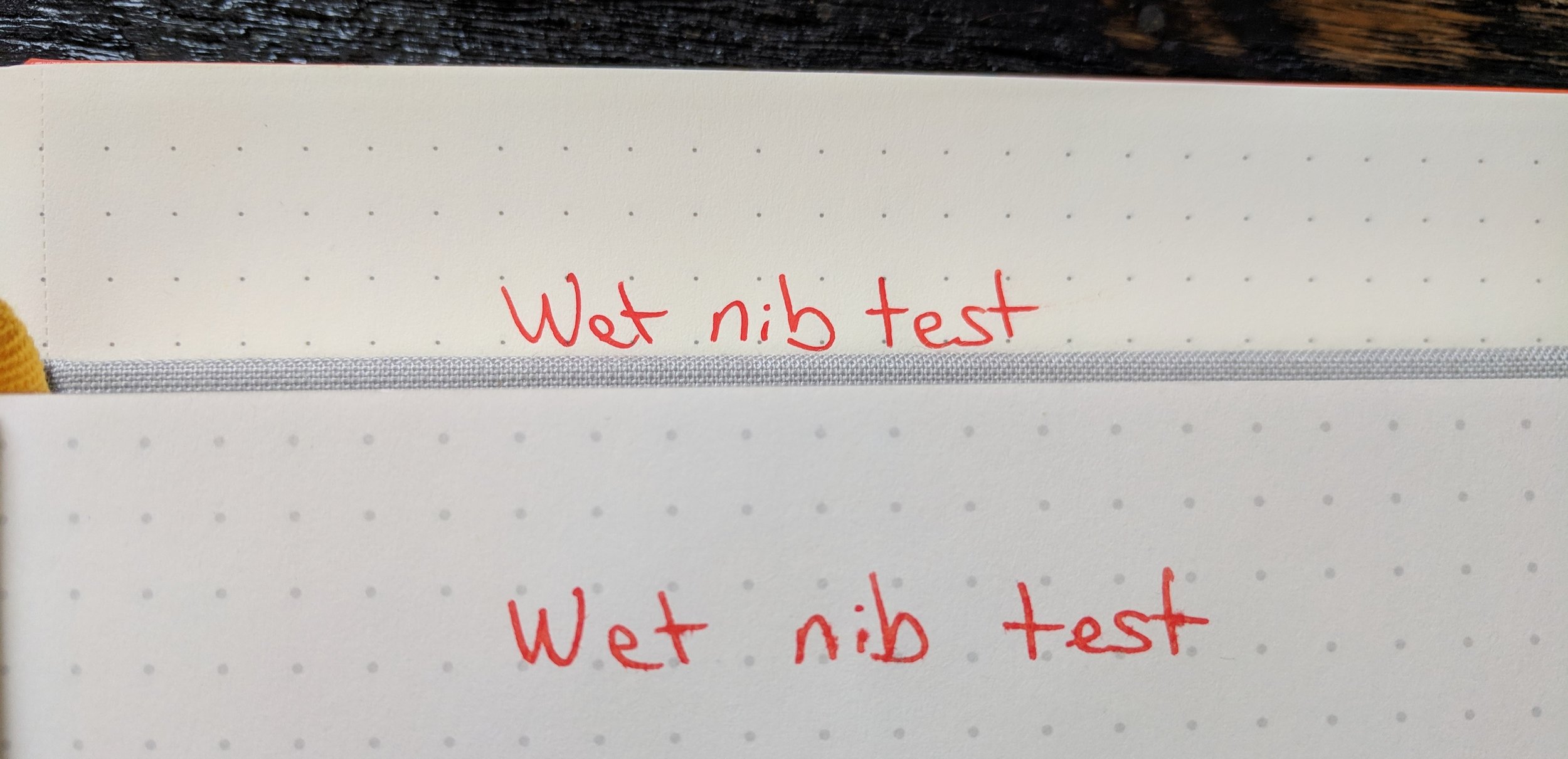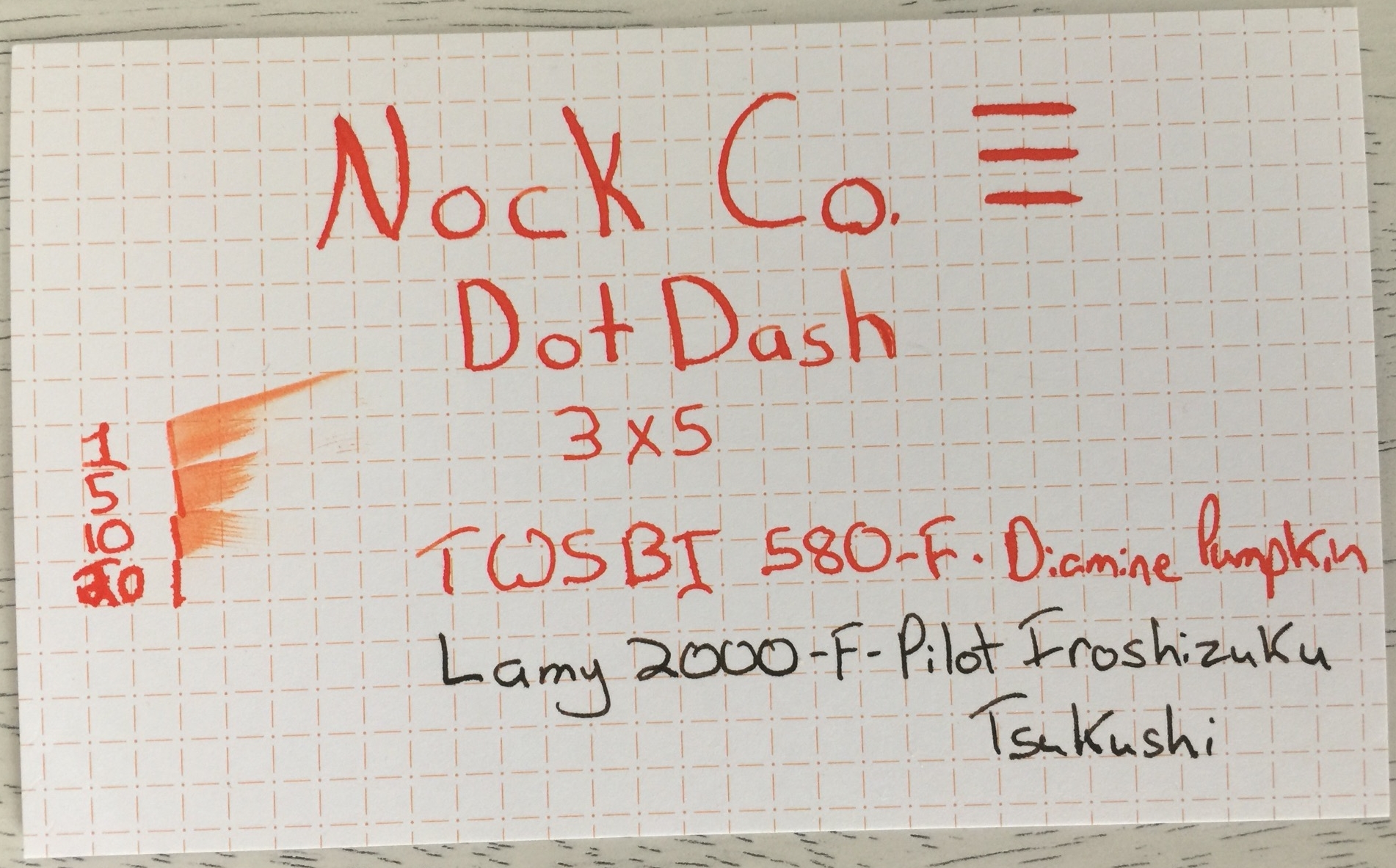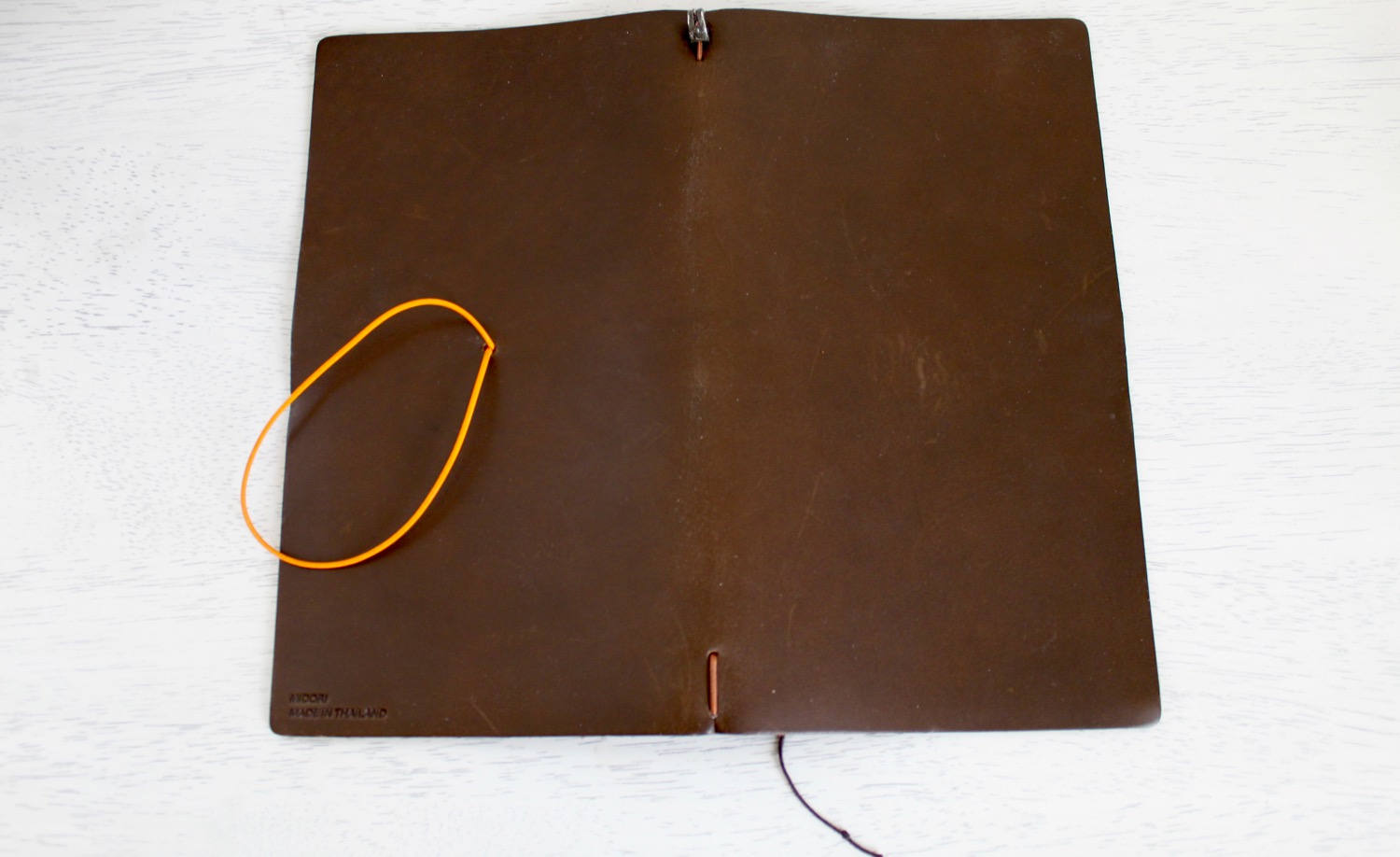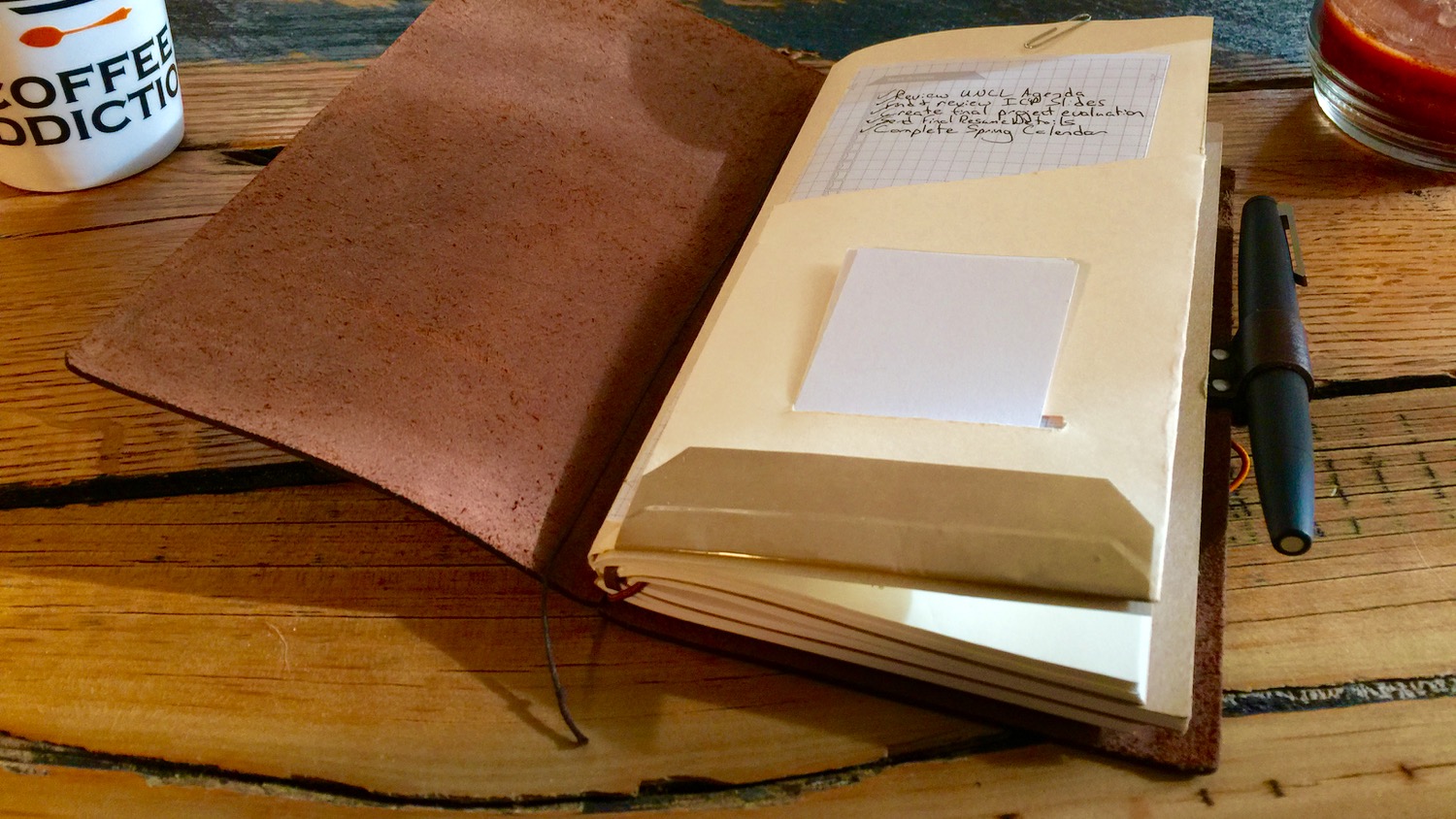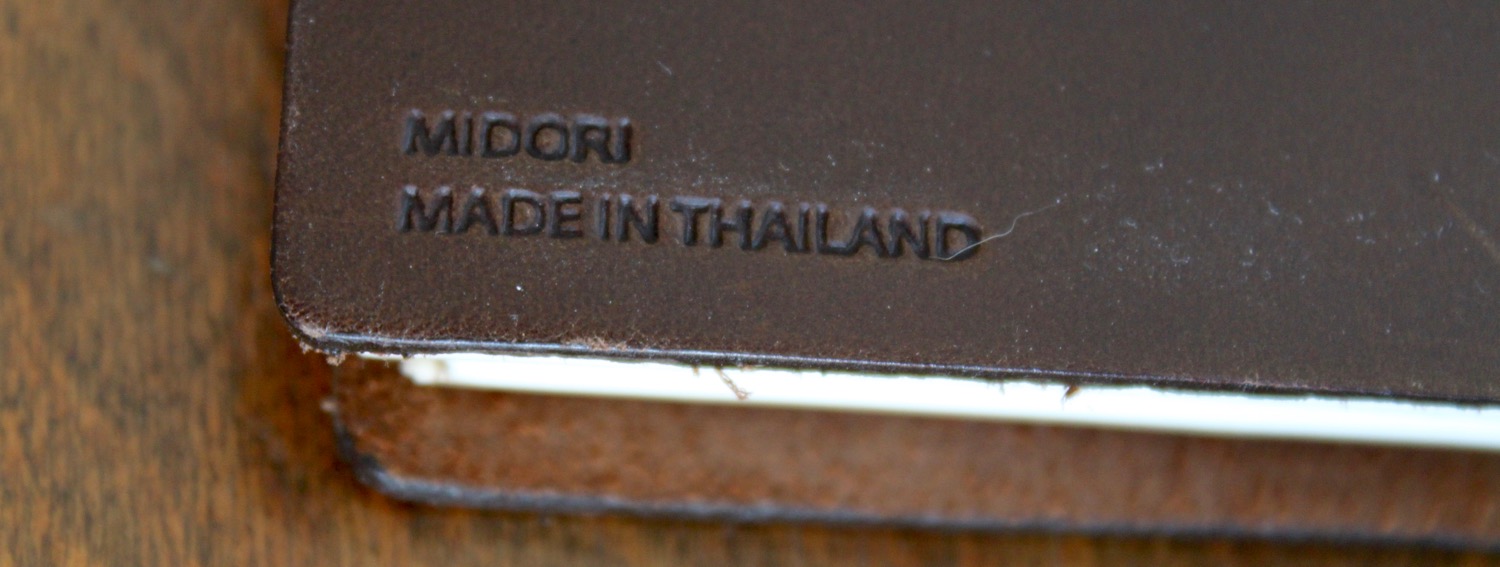A fountain pen is only as good as the paper with which it's used, and if you've ever used one with run-of-the-mill looseleaf, you know exactly what I mean.
The Baron Fig Confidant is one of the most well known premium notebooks on the market, and it's likely because its performance matches the name. The notebook is well designed and functions beautifully as a primary notebook, in many situations. Its paper comes in several types, but I always choose the dot grid design, which is a nice compromise between blank and lined pages. The dots are a subtle gray and fade away when not in use, figuratively that is. I should note that my primary notebook for the last year has been an A5 Leuchtturm1917 hardcover, so this is what I'll use for comparison.
At first glance, the Baron Fig Confidant Flagship is a stunner. The linen hardcover has a great feel, and I much prefer it to the Leuchtturm1917's cover. Speaking of covers, Leuchtturm overs a ton of different color cover options. Although Baron Fig recently expanded its color offerings, they are not nearly as extensive as the colors available for the Leuchtturm1917. Although the color options for the Confidant are limited, I love the light grey cover and yellow bookmark combination. It really is a fantastic looking notebook. I've carried the Confidant around in my bag for weeks now, and it has also held up pretty well. I notice that the Confidant also has a slightly thicker cover than the Leuchtturm1917, making it a bit sturdier.
The Confidant comes with a single fabric bookmark, which makes me miss the two-bookmark design of the Leuchtturm1917 notebook. That said, the Confidant's bookmark is wider and feels less flimsy overall. Another aspect of the Leuchtturm1917 that I miss immediately is the elastic band that holds the notebook closed. This feature is relatively common, and its omission in the Confidant is an unfortunate one. I tend to throw my notebook in my bag, and the elastic band ensures that it won't come open, spilling any business cards that I've stuck inside or damaging the interior paper on other objects in the bag. This is made somewhat worse by the fact that the Confidant doesn't have an interior pocket either. Sometimes I like to carry a notebook on its own, and it's helpful to have a little pocket or elastic band to hold bits and bobs in place.
I have to admit, I don't really get the whole lay-flat design with the Confidant. For those unfamiliar, Baron Fig claims that its notebooks are designed to lay flat on a a flat surface. That's great in theory, and they do, but it's not necessarily a novel concept. The Leuchtturm1917 lays flat too, and I don't see any difference between the two notebooks.
Ooooh, everybody loves some good quantitative research. Confidant (left) and Leuchtturm1917 (right).
In my brief (and very unscientific) test of the Confidant's fountain pen performance, it performed moderately well, but not nearly as well as the Leuchtturm1917. I notice more feathering (spreading out of ink) with juicer nibs on the Confidant, but this would be less of an issue with finer nibs. When comparing the Baron Fig Confidant with the Leuchtturm1917, the Confidant dries faster, but the 1917 has less feathering. I also experienced a bleed-through issue with the Confidant and juicier nibs, which is sort of a deal breaker for me, since I always use both sides of a page and rely on my TWSBI 580 as a daily driver. The ink is also more vibrant on the Leuchtturm1917 page when it dries. Don't believe me? Take a look below.
Leuchtturm1917 in back (top) and Confidant in front (bottom). Notice the feathering in the Confidant?
It may seem like I dislike the Confidant from some of my comments, but that's not the case at all. This is a killer desk notebook for non fountain pen users. I could see myself buying the larger version to keep next to my computer or as a commonplace book, but it doesn't really fit my needs as a traveling companion. I'd love to be able to keep a few business cards tucked away in it, but there are no pockets nor an elastic band to hold things in place. If you carry your notebook in a backpack or bag pocket by itself, this probably won't be much of an issue, but it just doesn't work well in my bag full of random office supplies and teaching materials. For now, I'll stick with the Leuchtturm1917 as my notebook on the go, but the Baron Fig Confidant is still a solid performer that's worth a look.

